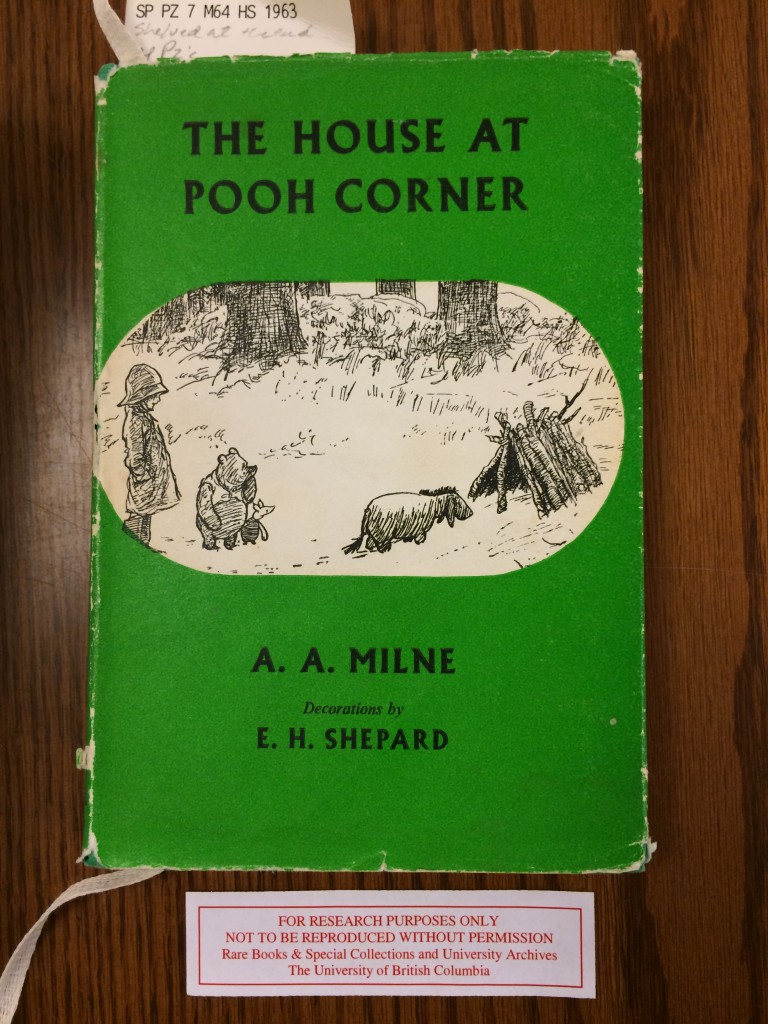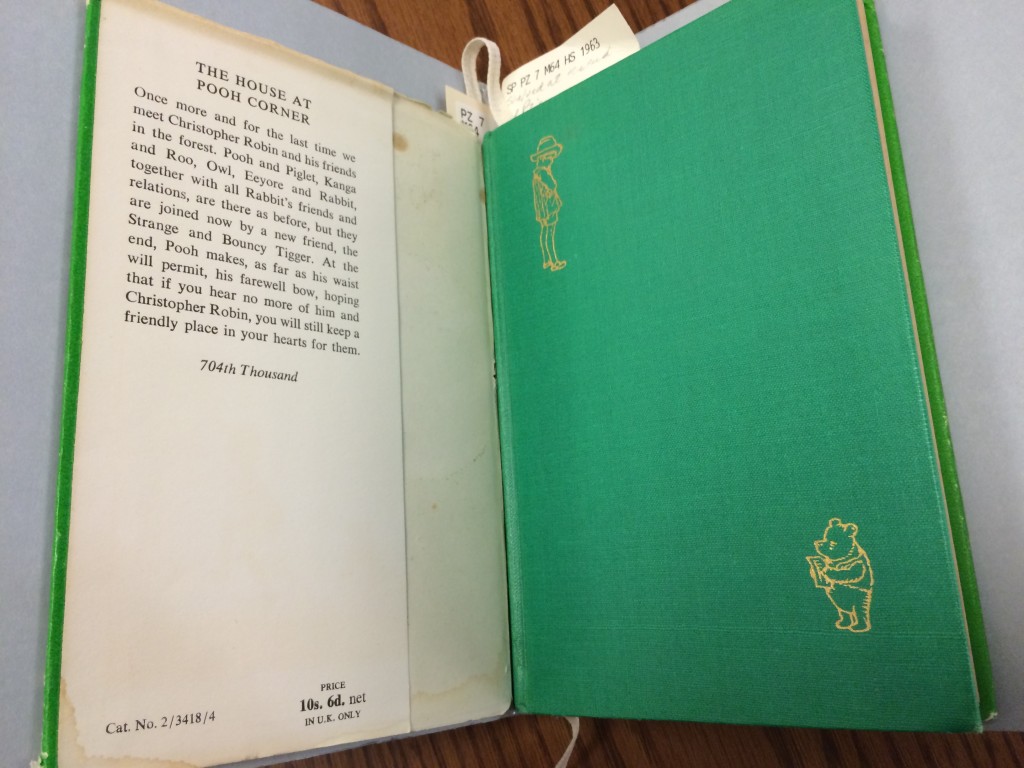
Front dust jacket cover of A. A. Milne’s The House at Pooh Corner
Today, when we think of contemporary children’s books we all too often default to the image of bright colours, bold typefaces, and garish cartoons. It is refreshing to be presented with the copy of The House at Pooh Corner from UBC’s Rare Books and Special Collections. Simple, unassuming, and humble in appearance, the copy is a reminder of the not-so-distant-past. It’s well-worn condition—from its jagged-edged dust jacket to its slightly fading pages—suggests this copy was beloved and well-read by its previous owners. Perhaps these marks of age and use are from the number of times Beatrice Roslyn Robertson read this book to her three children.
The Dust Jacket
When I first held The House at Pooh Corner, I was intrigued by how well this copy was preserved. Every page was intact, the book’s spine was not falling apart, and the type’s black ink still looked crisp and strong almost a hundred years after it was printed. Knowing that the dust jacket of this book played a role in maintaining its good condition, I decided to investigate the history and production of the dust jacket.
What I discovered was that during the 19th century, books were seen as expensive, desirable items that needed to be protected as they were transferred from the bookseller or binder to the library. The dust jacket was initially introduced as a means of protection, designed to wrap around the book and encase it completely. First used during the 19th century, they were originally made from plain paper wrappers that could be easily disposed of after the book had completed its journey to the library or owner. Then, the decorative dust jacket was born, which would radically change the function of a dust jacket from a protective layer to a promotional tool.
By the 1920s, pictorial and illustrated dust jackets had become the norm. Dust jacket had evolved into a marketing device that publisher’s could use to promote the books they contained and include advertisements for other publications, as well as provide valuable biographical information about the author or details about other books by the same author or publisher. Today, these details displayed on old dust jackets are often considered valuable sources of information for out-of-print authors who we know very little about.
Looking back at the copy of The House at Pooh Corner with this newfound knowledge about dust jackets, I could identify the marketing elements of the text’s dust jacket. For example, the inset flap of the cover contains a brief synopsis of the text. This synopsis might be seen as the publisher’s marketing attempt to draw the reader in by providing an overview of what the book is about.

The inside flap of the dust jacket (left) and the book’s cover (right).
The Cover
Beneath the waning dust jacket lies a emerald-coloured cover that has Shepard’s illustrated motifs embossed in gold. Bound in linen cloth, the cover is textured due to the material’s fine grain. The application of cloth to the binding of books was important in the history of book-structure and publishing practice. By the early nineteenth century, publishers sought to employ a binding style that was more cost effective than traditional hand binding in leather but more lasting than paper. The introduction of cloth as a binding material satisfied the growing requirement for speed, simplicity, and economy in book production. I can only imagine how many copies of this edition were produced and bound in cloth to satisfy the supply and demand for The House at Pooh Corner.